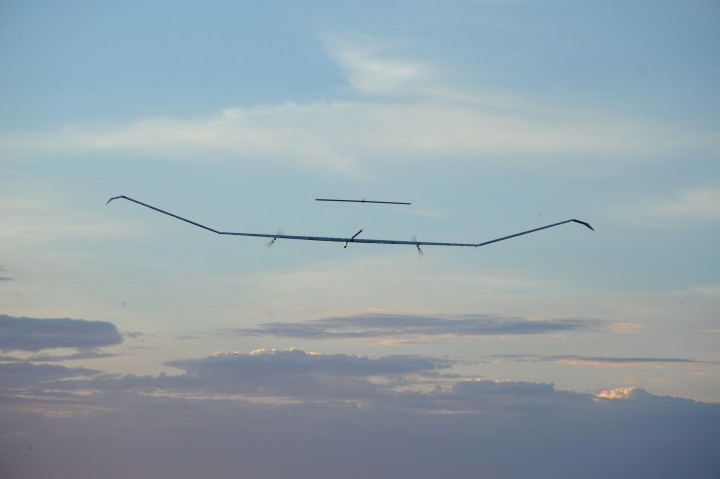
Airbus has successfully tested a prototype of its Zephyr T drone, which sports solar panels across the top of its body and wings. The company says the aircraft would only need to return periodically to have its batteries replaced. On those trips home, the Zephyr could also be retrofitted with new technologies, extending its overall life.
While the Zephyr T won’t replace our high-flying satellites that provide us with up-to-the minute images of weather worldwide and run our GPS networks, it could perform much simpler tasks. For example, they could provide much sharper images for defense, intelligence or emergency management purposes, or help augment communications networks in emergencies.
Using unmanned planes for this type of use is nothing new. NASA’s Helios project was the first to attempt it back in 1999, but those planes only could stay in the air for 24 hours. Airbus hopes to keep drones airborne for much longer periods of time — weeks or even months — and have turned to solar in order to reduce weight as a result of fuel storage.
When finished, the Zephyr T will have a wingspan of 108 feet, and a payload capacity of 44 pounds. It will have a top altitude of 65,000 feet and be designed to fly slow enough that it will be useful for the surveillance operations that will likely be its primary use. Even with the payload, the drone will weigh less than 300 pounds overall.
There are still issues to overcome, mainly how it will maintain altitude during the night when its panels will not be able to generate power. Other solar planes — like the Solar Impulse 2 — descend to lower levels at night because flying at lower altitudes is easier and consumes less power. The Zephyr cannot do that without entering heavily-trafficked commercial airspace.
Airbus expects to get its battery technologies to a point where it does not need to descend, however, it’s not there just yet.


